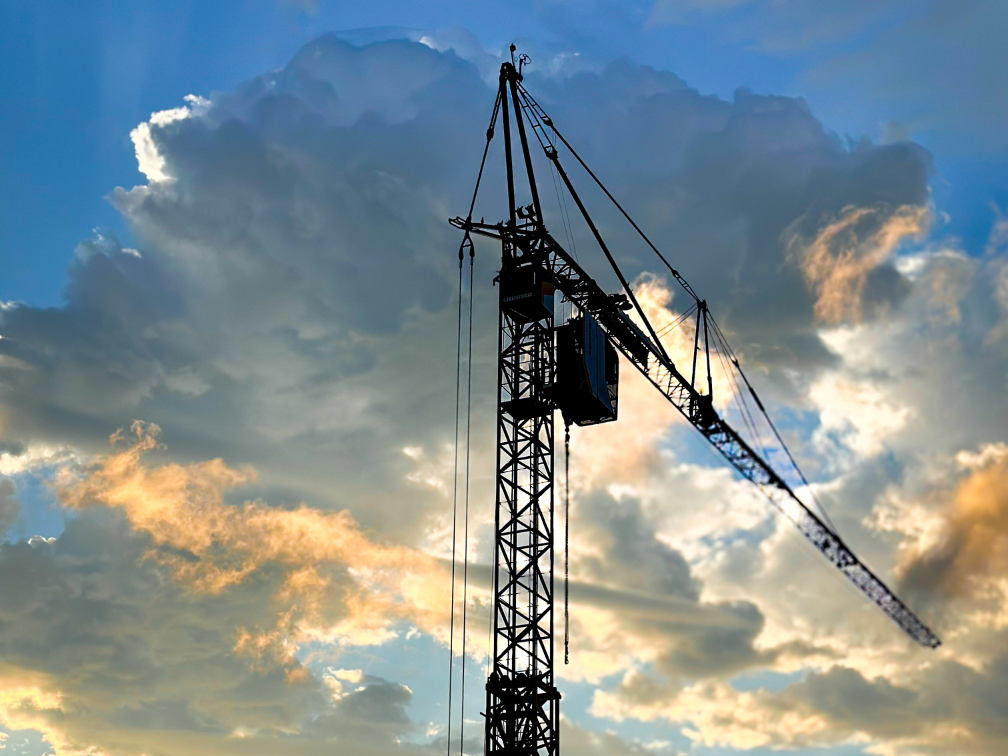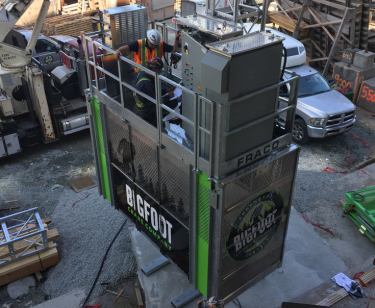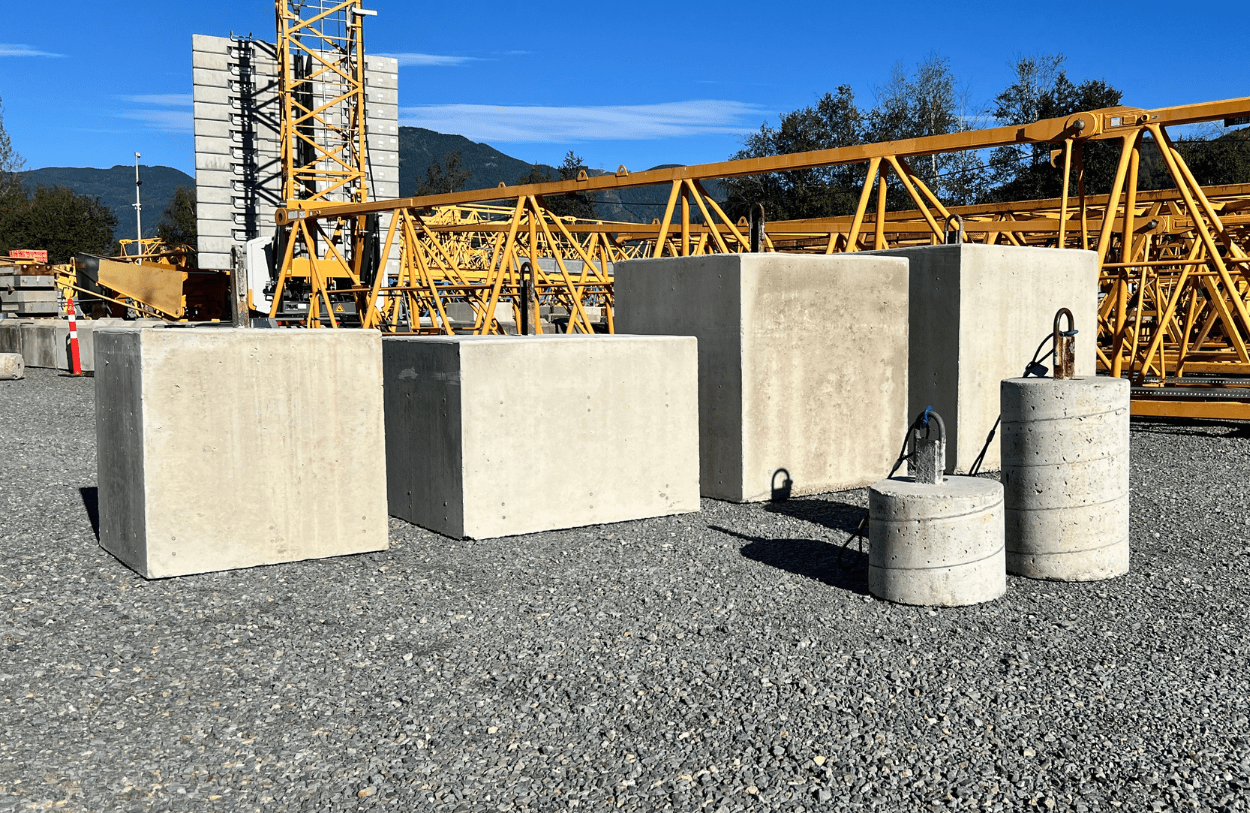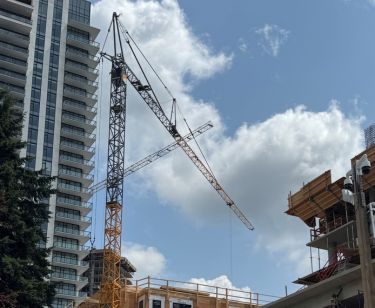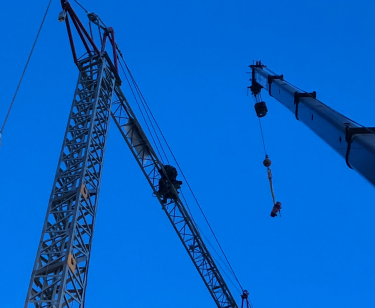The indisputable lifting champion when it comes to construction cranes in British Columbia’s Lower Mainland is the almighty tower crane. Without it, some of the most iconic skylines in Vancouver and surrounding areas would look entirely different. Thinking about these construction site staples across BC, most people can’t help but wonder how Tower Cranes in BC can function. Tower Cranes in BC have become essential for handling various construction tasks efficiently.
Tower cranes’ tall and slender figure makes it hard to believe they can carry so much weight, especially in the diverse terrain of British Columbia. If you’re curious about these marvels of the construction world in BC’s Lower Mainland, we’ve got you covered. Read on to answer all your Tower Crane-related questions, including the numerous benefits of Tower Cranes in BC for projects in British Columbia once and for all.
The Evolution of the Tower Crane
Derrick tower cranes were one of the first tower cranes ever to see the light on construction sites. In BC’s early construction days, builders relied on a pioneering lifting device inspired by Thomas Derrick’s gallows design, featuring an innovative rotating base supporting a hinged boom. Back then, there was no way to rent tower crane equipment in the Lower Mainland. Construction crews had to come up with this type of ingenious lifting mechanism to tackle BC’s unique construction challenges.
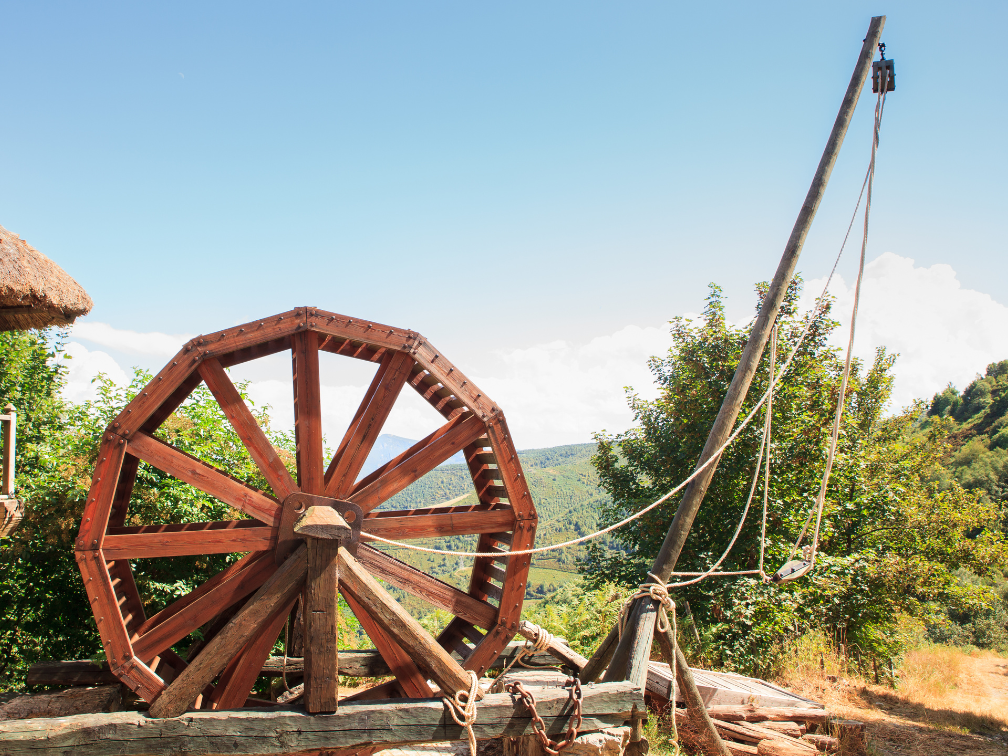
The early 20th century brought in a new design, revolutionizing construction in Vancouver and other BC cities. Construction workers got tired of trying to maneuver large heavy equipment in denser urban areas like downtown Vancouver. As Vancouver’s cityscape began to evolve, construction teams developed the Gantry tower crane to meet the unique challenges of urban building projects. Its tower featured suspended beams and trolleys. This model wasn’t that efficient, however, as the extra elements made it too heavy for most urban uses in BC’s growing cities.
The evolution of tower cranes in BC has led to designs that meet the unique demands of the construction industry in this region. Tower cranes in BC are designed to adapt to various construction needs, making them a common sight in both urban and rural projects across the province. Tower cranes in BC play a critical role in ensuring that construction projects are executed efficiently, offering unparalleled lifting power and adaptability. Today’s tower cranes in BC are equipped with advanced technology to enhance their effectiveness at construction sites.
The tower crane we know and love appeared in 1949, quickly making its way to British Columbia’s construction scene. The German Hans Liebherr conceived the machine to support post-war efforts to rebuild major cities, a concept that resonated with Tower Cranes in BC’s rapid urban development. Liebherr’s revolutionary concept, which quickly found its way to BC’s construction sites, incorporated a tower capable of full rotation paired with a horizontal jib for unprecedented flexibility. It had a 360-degree range that made construction work much easier, especially in the varied terrain of the Lower Mainland. Little did Liebherr know that his design would become a major inspiration for future prototypes used across British Columbia.
The 1970s saw a significant shift in BC’s construction landscape, as crane manufacturers transitioned from hydraulic systems to more efficient and environmentally friendly electric-powered models. This shift was particularly beneficial for BC’s construction industry, aligning with the province’s focus on sustainable and energy-efficient practices. Modern models have dozens of features that the crane operators of old in Vancouver could only dream of. Today, tower cranes in BC are more powerful, versatile, and energy-efficient than ever, adapting to the unique needs of the province’s diverse construction projects.
Importance of Tower Cranes at BC Construction Sites
Tower cranes are indispensable assets for modern construction projects across British Columbia. These powerful machines enable construction companies in the Lower Mainland to work faster, more efficiently, and handle heavy lifting with ease. Here’s why tower cranes are crucial at construction sites in BC:
The lifting capacity of Tower Cranes in BC is unmatched, making them invaluable for high-rise construction.
Enhanced Efficiency
From skyscrapers to bridges, Tower Cranes in BC play a vital role in constructing diverse structures across the province.
Through their energy efficiency, tower cranes contribute to a more sustainable approach to construction.
Tower cranes greatly accelerate construction processes by efficiently lifting and transporting heavy materials. This boosts productivity and reduces the time required for various construction phases, a critical factor in BC’s fast-paced urban development, particularly in cities like Vancouver and Surrey.
Unmatched Lifting Capacity
With the precision offered by tower cranes, construction teams can achieve exceptional results in their projects. It’s clear that without tower cranes, many construction projects would be far more challenging and less efficient.
Understanding how tower cranes operate can help inform decisions on project planning and execution.
Learning about the mechanisms of tower cranes can provide insights into their capabilities and limitations.
These machines can lift extremely heavy loads that would be impossible for human labor alone. For example, they can move large items like steel beams, concrete blocks, and electrical generators effortlessly to any height. This capability is especially valuable in BC’s high-rise construction projects and infrastructure developments.
Utilizing tower cranes leads to optimized resource management and streamlined project timelines.
Versatility in Building
Tower cranes are essential for constructing diverse structures such as skyscrapers, bridges, and elevated railways. Their ability to reach great heights and cover wide areas makes them perfect for urban development projects in BC’s Lower Mainland and beyond.
Energy Efficiency
By streamlining the transportation of materials on-site, tower cranes reduce the need for multiple machines and extensive manual labor. This not only cuts down on operational time but also contributes to a more energy-efficient construction process, aligning with BC’s commitment to sustainable development.
Precision
Tower cranes offer exceptional precision when positioning materials. This accuracy ensures that components are placed exactly where needed, which is crucial for maintaining the integrity and quality of construction projects in BC’s varied urban and natural landscapes.
Imagine a construction site in Vancouver or Victoria without a tower crane. Without tower cranes, BC’s ambitious architectural projects and critical infrastructure developments—from Vancouver’s sleek high-rises to vital transportation networks across the Lower Mainland—would face insurmountable challenges. The presence of tower cranes is a key factor behind the skyline of contemporary cities in British Columbia and the functionality of critical transportation networks across the province.
How Do Tower Cranes Work in BC’s Diverse Terrain?
Tower cranes operating in British Columbia’s Lower Mainland face unique challenges due to the region’s varied geography. From the dense urban environment of Vancouver to the mountainous terrain of the North Shore, these machines must adapt to different conditions. Here’s a detailed breakdown of how these towering giants operate in BC:
Each component of Tower Cranes in BC is engineered to perform under the unique conditions found in the province.
Basic Mechanics of Tower Cranes
When selecting equipment, consider how tower cranes can meet the demands of your specific project.
Many factors influence the right choice of tower cranes in BC, including project scope and job site accessibility.
The initial step in setting up a tower crane involves securing it to a robust foundation, typically a reinforced concrete slab or steel framework. In British Columbia, this base must be exceptionally sturdy to cope with the region’s earthquake risks and diverse ground conditions.
Emerging from this solid footing is the crane’s vertical core, known as the mast. This towering structure is built using interconnected steel lattice segments, assembled piece by piece on-site to reach the desired elevation. The height of these cranes in BC varies greatly, accommodating projects ranging from modest suburban developments to soaring skyscrapers in Vancouver’s downtown core.
At the top of the mast is the turntable, which allows the jib (the crane’s main working arm) to pivot a full circle. This 360-degree mobility is essential for maneuvering in the constrained spaces typical of BC’s urban construction zones. The crane’s lifting capacity comes from its hook, which is connected to the jib via a movable trolley and pulley system. This setup allows for precise horizontal and vertical movement, ensuring accurate placement of loads across the construction site.
Operating Components
At the heart of the crane’s functionality is the control cabin, housing all necessary operational interfaces. Within this compact space, skilled operators manipulate joysticks and digital systems to achieve precise movements and maintain lifting safety. British Columbia’s diverse climate demands exceptionally skilled operators, capable of navigating challenges from Vancouver’s dense fog and heavy downpours to the potential for icy conditions at higher altitudes in places like Whistler.
Projecting from the tower’s apex is the horizontal jib, the primary load-bearing arm. Counterbalancing this is the counter jib, extending in the opposite direction and supporting substantial weights. These counterweights, typically composed of steel-reinforced concrete, play a critical role in stabilizing the crane during use. Their importance is particularly pronounced in BC’s coastal regions, where strong gusts can significantly impact crane operations.
Load Management
The essence of tower crane operation lies in its ability to precisely balance and maneuver loads. The crane’s structural design, featuring a sturdy lattice framework and strategic use of counterweights, ensures optimal tension distribution during hoisting tasks. This precision is especially vital in British Columbia, where construction often involves elevating substantial prefabricated elements in densely packed urban environments.
A mobile trolley traverses the jib’s length, fine-tuning the cargo’s position, while an intricate pulley mechanism facilitates smooth vertical movement of the hook and its payload. The crane’s rotating base provides an expansive operational radius, allowing for pinpoint placement of materials across the construction zone. This adaptability is crucial for tackling the varied architectural challenges encountered throughout British Columbia’s diverse building landscape.
Parts of a Tower Crane
To fully understand how tower cranes operate in British Columbia’s building sector, one must familiarize themselves with the machine’s core elements. Every component contributes significantly to the crane’s overall performance and steadiness, each designed to meet the distinct demands posed by the province’s varied construction landscapes. From urban centers to remote worksites, these tower crane parts work in harmony, allowing the crane to adapt to the unique challenges presented by British Columbia’s diverse topography and building requirements.
Base Support
Anchoring the entire tower crane structure is its base support, a crucial foundation situated at the crane’s lowest point. In British Columbia, this base is commonly affixed to a sturdy concrete platform, creating a solid footing capable of enduring the area’s seismic challenges. Alternatively, the base might be secured to a steel grid or a weighted frame, which can be positioned either on existing structures or directly on the terrain. This essential groundwork guarantees the crane’s stability throughout its operations, adapting to British Columbia’s diverse ground compositions, from the rocky coastal regions to the softer soils of inland valleys.
Tower (Mast)
The mast, also known as the tower, forms the vertical backbone of the crane, propelling its reach skyward. This soaring structure bears the weight of essential components like the control cabin, lifting mechanism, and balancing weights. Comprised of interlocking steel lattice sections, the mast combines strength with flexibility, enabling the crane to achieve remarkable heights while maintaining structural integrity. In British Columbia’s diverse topography, mast designs must be particularly robust, engineered to withstand powerful gusts prevalent along the coast and in mountainous regions, ensuring the crane’s stability in the face of challenging weather conditions.
Turntable
Crowning the mast is the turntable, a crucial element that grants the crane its impressive rotational ability. This pivotal mechanism allows the jib to sweep in a full circle, dramatically expanding the crane’s operational reach. Employing technology reminiscent of wind turbine systems, the turntable facilitates fluid and exact rotational movements. Its functionality is indispensable across British Columbia’s varied construction landscape, enabling precise load placement whether navigating the confined spaces of downtown Vancouver or servicing sprawling industrial developments in the province’s heartland.
Operator’s Cab
Serving as the crane’s command center, the operator’s cab is a compact, enclosed workspace that houses both the crane operator and an array of sophisticated controls. This high-tech cockpit features joysticks and computerized systems that allow for intricate maneuvering of the crane. From this elevated perch, operators skillfully orchestrate complex lifting and placement operations with remarkable accuracy. Given British Columbia’s variable climate, these cabs are typically outfitted with temperature regulation systems, ensuring operators can work comfortably and efficiently regardless of the season or weather conditions outside.
Jib (Working Arm)
The jib, often referred to as the crane’s working arm, is the horizontal beam that projects from the tower’s apex. This crucial element bears the weight of lifted loads and guides their placement. With its ability to reach out and transport materials laterally, the jib offers remarkable versatility in positioning items precisely where they’re needed across British Columbia’s diverse construction landscapes. The jib’s reach can be customized to suit the unique requirements of each project, taking into account both the specific needs of the build and any limitations imposed by the site itself.
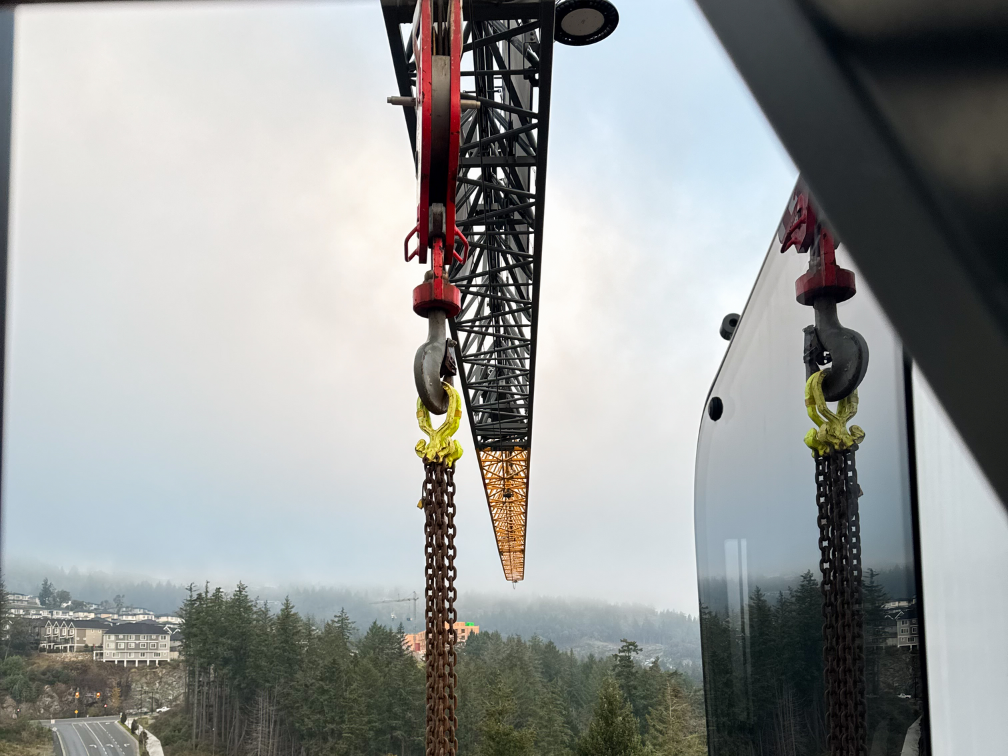
Trolley and Hook Block
A key component in the crane’s lifting mechanism is the trolley, a mobile unit that glides along the jib’s length. Coupled with the trolley is the hook block, an intricate pulley assembly that enables vertical movement of the hook. This duo works in tandem to raise and lower loads with precision, allowing for smooth ascent and descent along the tower’s height. The synergy between the trolley and hook block is especially critical in British Columbia’s soaring construction projects, where pinpoint accuracy in material placement can make or break a high-rise development.
Counter Jib
Extending in the opposite direction from the main jib is the counter jib, a horizontal beam crucial for maintaining the crane’s equilibrium. This opposing arm works to offset the weight of the lifted load, acting as a counterbalance to the main jib’s efforts. Additionally, the counter jib provides a secure mounting location for the counterweights, which are vital for the crane’s operational stability. In British Columbia’s often blustery conditions, where wind forces can be substantial, the counter jib takes on added importance, playing a key role in keeping the crane steady and secure throughout its lifting tasks.
Counterweight
Integral to a crane’s equilibrium are its counterweights, strategically positioned at the counter jib’s end to offset the load on the main jib. These hefty components are indispensable for maintaining the crane’s stability and maximizing its lifting potential. Without them, the crane’s carrying capacity would be drastically limited to preserve balance. Typically fashioned from dense materials like steel-reinforced concrete, these weights provide the essential mass to keep the crane steady. In British Columbia, engineers fine-tune the counterweight specifications—adjusting both mass and arrangement—to suit the unique demands of each project and adapt to the province’s diverse environmental factors.
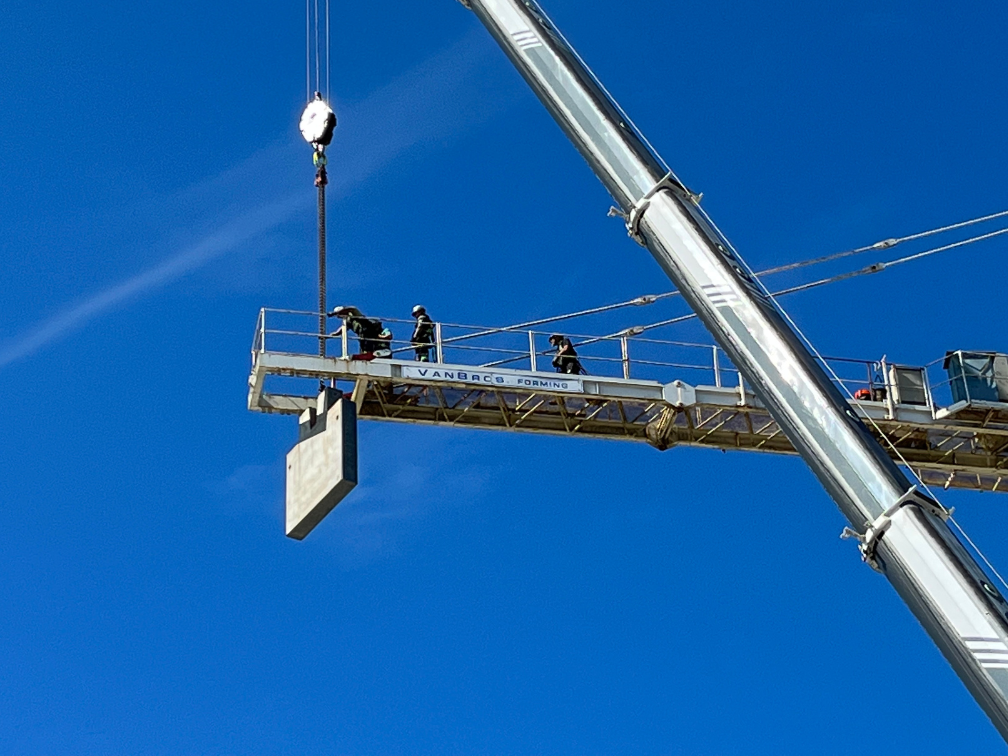
Types of Tower Cranes Common in BC
There are as many tower crane types as there are lifting needs in British Columbia’s construction industry. When it comes to vertical construction, few machines are as instantly recognizable—or as essential—as tower cranes. Whether you’re building downtown high-rises or moving heavy loads in industrial sectors, the type of crane you use makes all the difference. Here’s a closer look at the most common types of tower cranes and how they’re redefining modern construction across British Columbia and the Lower Mainland.
Hammerhead Tower Crane (Top Slewing)
Hammerhead cranes, also called A-frame or High-Top Tower Cranes, are top-slewing machines known for their distinctive triangular support structure that links the jib and counter-jib. This ‘A’ frame setup gives them superior stability and strength, allowing for extended jibs and increased lifting capacities.
These cranes are a go-to for mid- to large-scale projects—especially where weight, reach, and precision matter. Their fixed vertical mast supports a rotating top that can spin 360 degrees, giving them the flexibility to lift and place heavy materials with pinpoint accuracy in tight city environments.
Despite often being confused with flat-top cranes, High-Top Tower Cranes differ in their reinforced upper structure, which allows them to handle more weight and accommodate longer jibs without sacrificing performance.
Luffing Jib Cranes
When a project demands tight maneuvering between buildings or above active roadways, Luffing Tower Cranes step in. Unlike hammerhead or flat-top cranes, these feature a jib that pivots upward—”luffing”—instead of extending horizontally.
This vertical movement gives operators fine control over where the load is placed without swinging it over surrounding buildings or jobsite hazards. That makes luffers a preferred choice for high-rise construction in space-constrained environments.
Flat-Top Tower Cranes
Designed with city projects in mind, Flat-Top Tower Cranes remove the top-mounted metalwork, resulting in a cleaner silhouette and easier transport and setup. Without the cat-head or top ties between jib and counter-jib, these cranes are faster to erect and dismantle—an important consideration for quick-turnaround urban builds.
Their compact design makes them ideal for job sites where space is limited and multiple cranes may be working nearby, as is common in downtown Vancouver and other dense metropolitan cores.
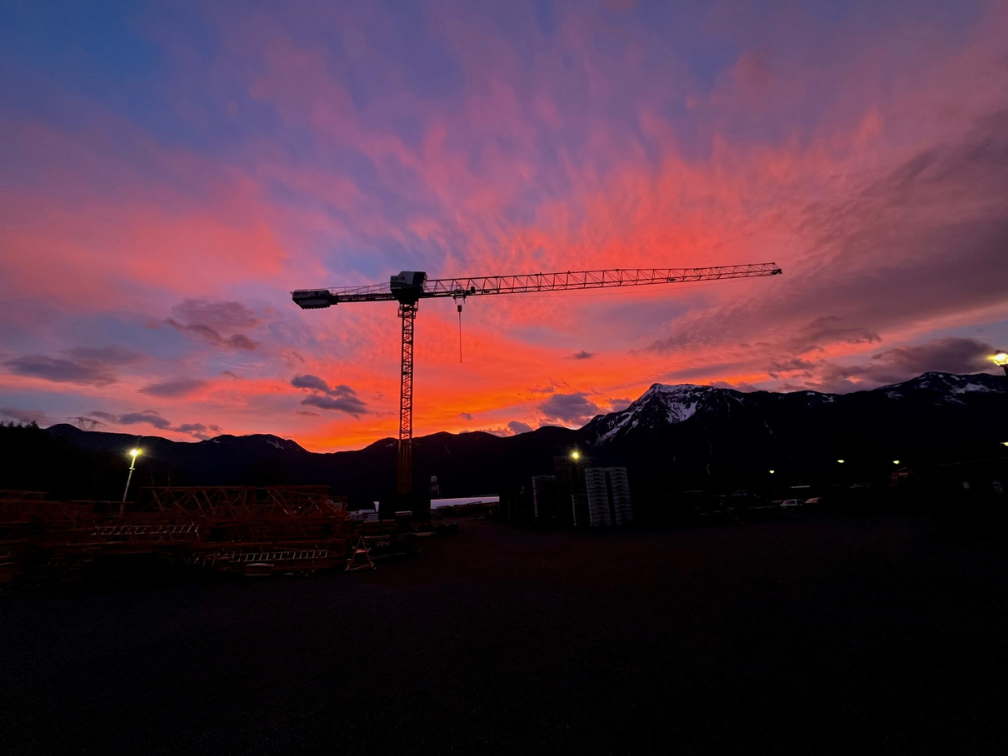
Self-Erecting Cranes
Perfect for small-scale or short-term builds, Self-Erecting Tower Cranes combine ease of transport with quick setup. Using integrated hydraulic systems, these cranes lift and unfold themselves without the need for additional assistive machinery.
Though limited in height and lifting capacity, their agility and efficiency make them popular in residential developments and suburban construction projects throughout British Columbia.
Derrick Cranes
Once a skyscraper is complete, how do you remove the crane that helped build it? Enter the Derrick Crane. Purpose-built for deconstruction, these compact cranes are installed atop buildings to systematically dismantle large tower cranes that can’t be removed by ground-based equipment.
They allow for safe, methodical takedown of equipment and materials—ensuring the project’s final phase is just as controlled as its start.
Heavy Load Tower Cranes
In sectors like mining, oil & gas, or major infrastructure development, Heavy Load Tower Cranes take center stage. These cranes are engineered to handle immense weights, often featuring reinforced masts and custom lifting gear to ensure safety and accuracy under extreme conditions.
While not as common in city centers, you’ll find them dominating industrial zones, ports, and resource-heavy regions across BC and beyond.
Selecting the Right Tower Crane for Your BC Project
Every construction endeavor in British Columbia presents its own set of unique tool and equipment needs. Picking the most appropriate tower crane requires careful consideration of several key factors specific to the Lower Mainland’s building environment. Bigfoot Crane Company offers expert guidance to help you select the perfect crane for your particular BC project, ensuring smooth and efficient operations.
Required Lifting Capacity
Assess the crane’s primary function. For projects mainly handling lightweight materials, a smaller tower crane might suffice. If occasional heavy lifting is needed, combining a smaller tower crane with a mobile crane for these specific tasks could be more economical. In BC’s diverse construction landscape, ranging from residential developments to major infrastructure projects, accurately gauging the required capacity is essential.
Investing in Tower Cranes in BC ensures that your project benefits from the latest advancements in lifting technology.
Projects in BC, such as hospitals and educational facilities, greatly benefit from the efficiency of tower cranes in BC.
Space Availability & Site Constraints
Critical infrastructure projects can efficiently utilize tower cranes to manage heavy components and materials.
Although tower cranes have a minimal ground footprint, their assembly and disassembly demand considerable space and auxiliary equipment. In BC’s urban centers, where real estate is scarce, strategic crane placement planning is crucial. Bigfoot Crane Company’s experts can assist in determining the optimal crane location and planning the assembly area, ensuring efficient setup with minimal disruption to the construction site and its surroundings.
In port and harbor expansions, tower cranes play a crucial role in facilitating construction and logistics.
Location & Positioning Considerations
Major public facilities often require the powerful lifting capabilities of tower cranes in BC for their construction.
Most tower cranes are immobile once installed, making their placement critical. The crane must have access to all areas requiring lifts. Given BC’s diverse topography, from level city plots to steep hillsides, this factor becomes even more significant. Bigfoot Crane Company’s team can evaluate whether a stationary tower crane will meet your needs or if additional mobile cranes would be beneficial for comprehensive coverage.
From industrial plants to multi-family housing projects, tower cranes are vital for efficient construction.
The Importance Of Zone Control and Anti-Collision Systems
In densely populated urban areas or on sites with multiple cranes, zone control and anti-collision systems become crucial safety features. These advanced technologies prevent cranes from entering restricted areas or colliding with other structures and machinery. Bigfoot Crane Company offers state-of-the-art zone control solutions that enhance operational safety, improve efficiency, and comply with local regulations. By implementing these systems, construction teams can maximize workspace utilization while minimizing risks, particularly important in BC’s complex and often confined building environments.
The Importance Of Wind Safety Anemometers
High winds are one of the most significant—and often unpredictable—hazards on any construction site, especially when working with tower cranes or at elevated heights. Wind safety anemometers play a vital role in monitoring real-time wind speed and transmitting accurate data to crane operators and site supervisors.
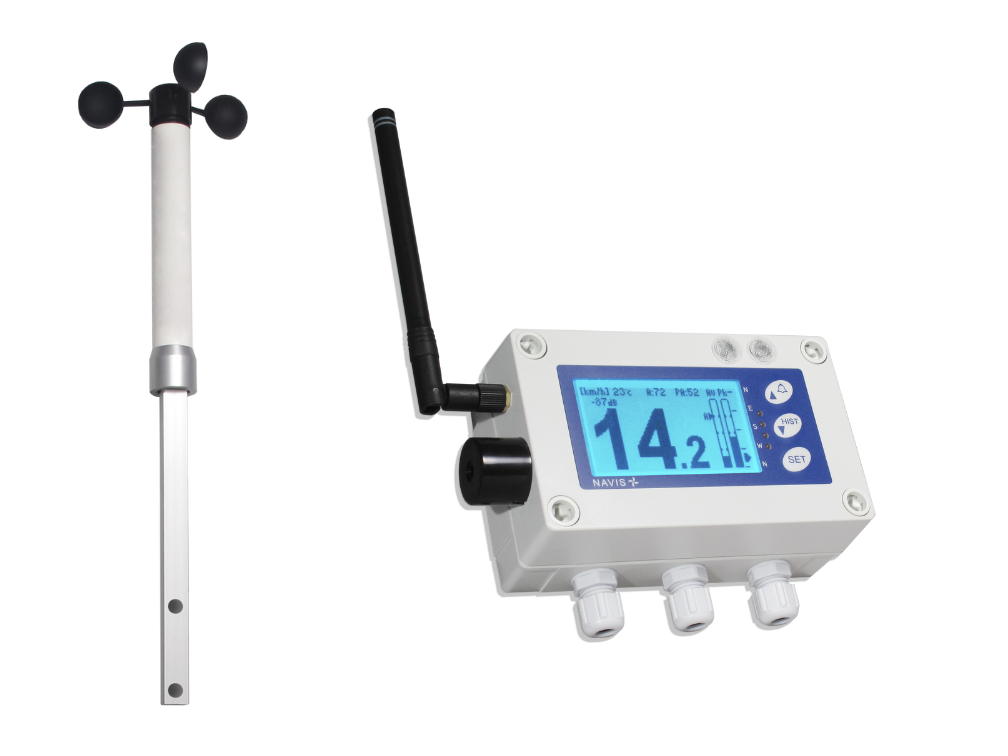
At Bigfoot Crane Company, we provide advanced wireless anemometer systems designed to enhance safety and meet regulatory requirements across British Columbia. These devices alert teams when wind speeds approach unsafe thresholds, helping prevent dangerous lifts, equipment instability, or catastrophic crane failures.
In BC’s variable climate and high-rise environments, having reliable wind monitoring is not optional—it’s essential. With our wind safety systems in place, crews can make informed decisions quickly, reducing downtime and ensuring work continues safely, even when conditions change without warning.
Load Capacity
Even ski resort developments rely on tower cranes in BC to manage construction activities in challenging environments.
Reviewing load charts is crucial to confirm that the chosen crane can manage the required weights at various distances. Identifying the heaviest loads and longest reaches ensures the crane can handle all necessary tasks. For projects with infrequent heavy lifts, using a smaller tower crane supplemented by mobile cranes for these specific loads might be more cost-effective. In BC, where projects often involve hoisting large prefabricated elements or heavy equipment, precise load capacity evaluation is vital for project safety and success.
The process of renting, transporting, and erecting a tower crane is complex and resource-intensive. Bigfoot Crane Company offers comprehensive services, from planning and transportation to assembly, maximizing crane efficiency while minimizing overall expenses. By partnering with Bigfoot Crane Company, you can rest assured that the selected crane will effectively and economically meet all your project’s lifting requirements, tailored specifically to the unique demands of construction in British Columbia.
Utilizing tower cranes in BC can lead to significant improvements in efficiency and safety at construction sites.
Renewable energy projects in BC benefit from the lifting capabilities of tower cranes, aiding in their successful implementation.
Ideal Uses and Projects for Tower Cranes in BC’s Lower Mainland
Tower cranes stand as essential equipment on construction sites throughout British Columbia, renowned for their impressive height and lifting prowess. These machines excel in projects demanding heavy lifting at significant elevations across the Lower Mainland’s varied urban and natural terrains. Due to the substantial investment required to purchase a tower crane, many BC builders find renting these massive devices a more cost-effective solution for their project needs.
These cranes are instrumental in hoisting steel, concrete, and other weighty materials, offering an efficient alternative to manual transport of bulky items. Beyond their practical use, tower cranes contribute to the distinctive skylines of cities like Vancouver, Burnaby, and Surrey.
Here’s a look at some projects in BC’s Lower Mainland where renting a tower crane proves particularly beneficial:
High-Rise Residential and Commercial Buildings
The booming real estate market in Vancouver and surrounding areas has led to a surge in high-rise construction. Tower cranes are essential for these projects, efficiently lifting materials to great heights and maneuvering them into place. From luxury condominiums in Metrotown, Burnaby, Coal Harbour and more to office tower construction in downtown Vancouver, tower cranes play a crucial role in shaping BC’s vertical landscape.
Hospitals and Educational Facilities
Constructing hospitals and educational institutions often requires installing hefty equipment and materials. BC projects such as Vancouver’s new St. Paul’s Hospital or University of British Columbia expansions rely on tower cranes to manage sophisticated medical devices, large-scale HVAC systems, and substantial amounts of structural steel and concrete. Their precise operation ensures critical installations proceed with minimal impact on surrounding areas.
Infrastructure Projects
BC’s population growth and focus on sustainable transit have spurred numerous infrastructure projects. Tower cranes are essential for bridge construction, like the Pattullo Bridge replacement, and rapid transit expansions, such as Vancouver’s Broadway Subway Project. These cranes expertly handle the heavy prefabricated components and equipment necessary for such large-scale ventures.
Port and Harbor Expansions
Vancouver’s port, Canada’s largest, undergoes continuous expansion and modernization to meet rising trade demands. Tower cranes are vital for these projects, aiding in the construction of new terminals, installation of heavy-duty lifting equipment, and expansion of storage facilities. Their ability to operate in confined spaces while managing heavy loads makes them ideal for complex port construction requirements.
Convention Centers and Sports Facilities
Major public facilities like the Vancouver Convention Centre or upgrades to BC Place Stadium greatly benefit from tower cranes. These projects often involve lifting massive structural elements, roof sections, or specialized equipment. Tower cranes provide the necessary reach and capacity to tackle these unique construction challenges.
Industrial and Manufacturing Facilities
BC’s diverse economy includes a robust industrial sector. Constructing or expanding factories, warehouses, or processing plants often requires tower cranes to install heavy machinery, erect large storage tanks, or assemble substantial steel frameworks. In areas such as Surrey’s Campbell Heights or Delta’s Tilbury Industrial Park, tower cranes facilitate the efficient development of these key economic centers.
Multi-Family Housing
Building apartment complexes and other multi-family residences involves constant lifting of heavy construction materials like steel beams, concrete slabs, and prefabricated panels. In rapidly developing areas such as Coquitlam’s City Centre or Surrey’s Central City, tower cranes excel, providing the necessary height and reach to accurately place materials in densely constructed zones.
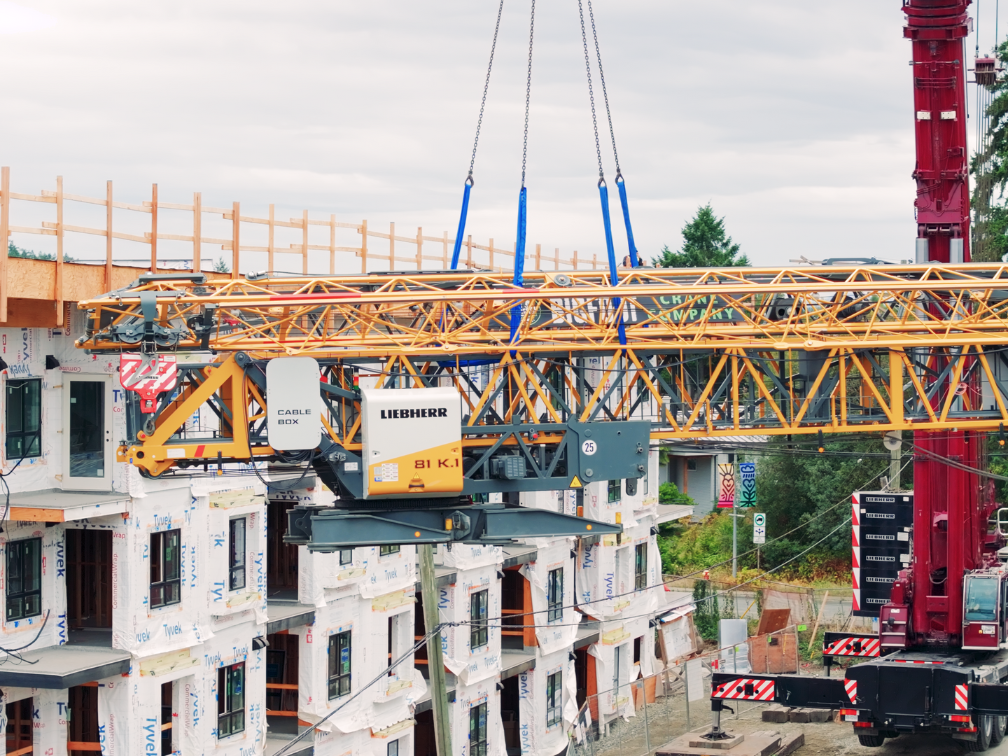
Ski Resort Development
BC’s world-renowned ski resorts, such as Whistler Blackcomb, occasionally undergo significant expansions or upgrades. Tower cranes are invaluable for these projects, helping to construct new lodges, install ski lifts, or build other mountain infrastructure. Their ability to operate effectively at high altitudes and in challenging terrain makes them essential for mountain development projects.
Water Treatment Facilities
As BC communities grow, so does the need for expanded water treatment infrastructure. Building water treatment plants involves the installation of large tanks, extensive piping systems, and other heavy components. Tower cranes streamline this process by lifting and positioning these heavy and unwieldy items with ease, ensuring that construction progresses smoothly and adheres to project timelines.
Sustainable Energy Projects
BC’s dedication to renewable energy has led to various sustainable power projects, including wind farms and hydroelectric installations. Tower cranes play a pivotal role in constructing these facilities, lifting and positioning large turbine components or aiding in dam construction. Their versatility allows them to adapt to the diverse requirements of these innovative energy projects.
Construction Power Reaching New Heights in BC
Tower cranes have evolved significantly since their inception in Europe, now serving as essential solutions for a variety of construction and lifting challenges across British Columbia. These legendary lifting powerhouses enhance efficiency, reduce costs, and promote sustainability on construction sites throughout the Lower Mainland and beyond. The strategic use of Tower Cranes in BC ensures that construction projects maintain high standards and meet rigorous timelines.
In BC’s diverse construction landscape, from the urban centers of Vancouver to the mountainous regions, tower cranes have proven invaluable. They’ve enabled the vertical growth of cities, supported sustainable development, and adapted to various challenging terrains. Self-erecting cranes are playing a crucial role in the construction boom of Squamish, facilitating the rapid development of new communities including residential, multi-family, hospital, and school projects. As BC continues to grow, these mighty machines will remain crucial for ongoing infrastructure projects and urban densification efforts. For your tower crane rental needs in BC, talk to one of our experts at Bigfoot Crane Company to find the perfect crane for your next project in the region. Our comprehensive range of tower cranes is suited to the unique demands of British Columbia’s construction industry. Bigfoot Crane Company’s knowledgeable team is ready to provide legendary service and assist you in selecting the right equipment to ensure your project reaches new heights of success in British Columbia’s dynamic construction landscape.
